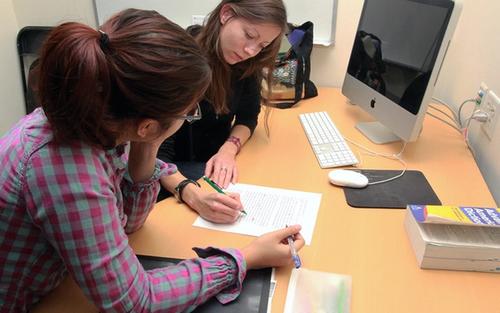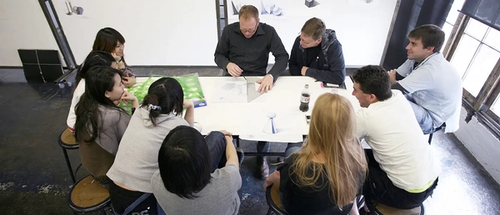
Foundations
At the base of every artist is a foundation.
Foundations
It is the objective of the Foundations department to provide a disciplined, cohesive approach to the study of art and design fundamentals to prepare students for advancement into their individual majors. The Foundations curriculum heightens perception and understanding of visual structure through the study of drawing, modeling of form, value structure, perspective principles, color, and design theory. Representational skills are emphasized and technical processes developed, providing students with principles for visual communication that can be applied in their fields of study.
We strive to nurture the beginning artist in a challenging and supportive environment through leadership guided by an experienced and professional faculty. The classroom experience includes lectures, demonstrations, and critiques to facilitate an understanding of the course material and direct communication with the instructor. Additionally, the Foundations department aims to instill an awareness of professionalism and industry expectations to enable students to meet the standards of their respective majors.
Foundations Classes
Foundations department courses are required for most majors and are determined by individual departments. Please check with your admissions representative to determine which Foundations classes are required for your major.
Waiving Foundations Classes
Students who are interested in waiving out of Foundations classes must review the waiver requirements and present work showing that they have the necessary skills for those classes. In addition, a test may be required. For more information on waiving Foundations classes, contact your admissions advisor.
The Foundations Department helps students develop the following skills:
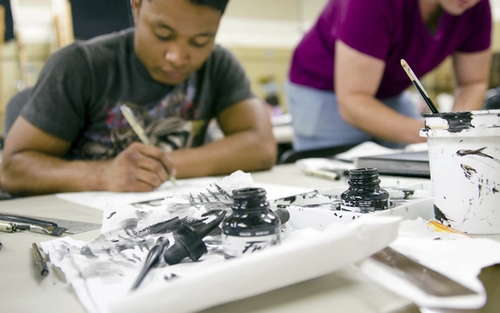
Visual Awareness
Ability to see visual elements in the world around us with a heightened sensitivity and understanding. Ability to recognize elements such as form, positive and negative space, spatial depth, value, and color as a unified, visual vocabulary.

Drawing Skills
Ability to draw objects and figures in interior and exterior environments demonstrating fundamental understanding of proportions, value structure, form/cast shadows, and perspective techniques to effect realism when drawing from life and imagination.
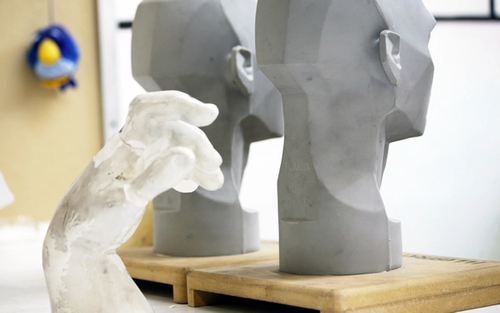
Rendering Skills
Ability to apply the 5-value system in drawings demonstrating fundamental achievement of three-dimensional form.

Composition
Ability to demonstrate design principles such as unity, contrast, balance, proportion, cropping, movement, and/or focal point in compositions.
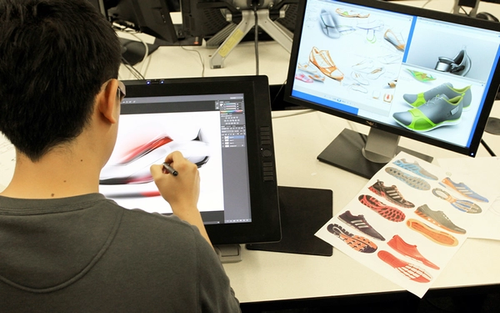
Spatial Depth
Ability to use overlapping forms, varying line weights, diminishment of sizes, linear, or atmospheric perspective techniques to suggest spatial depth in imagery.
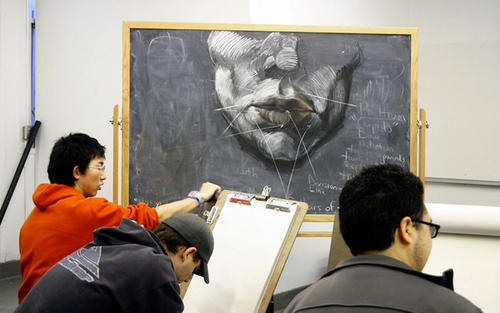
Perspective/Specific Techniques
Demonstrate fundamental ability in: isometric drawing techniques, 1, 2, 3-point, 2-point vertical, 4 and 5-point perspective techniques, plotting and rendering of light, shadow and reflections in perspective, combining of multiple sets of 2-point and 3-point perspective.
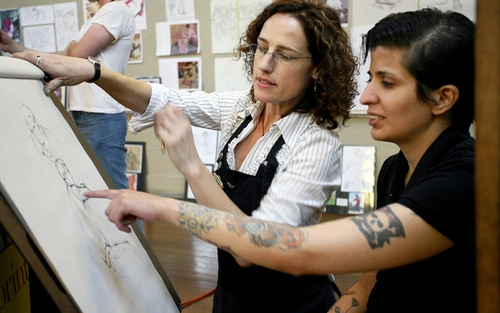
Visual Communication
Ability to communicate an intended effect in a visual image.
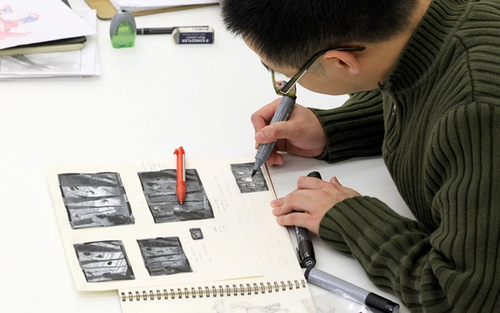
Communication of Mood/Emotion
Ability to use design elements such as color, value, and shape to suggest an emotional response in the viewer.
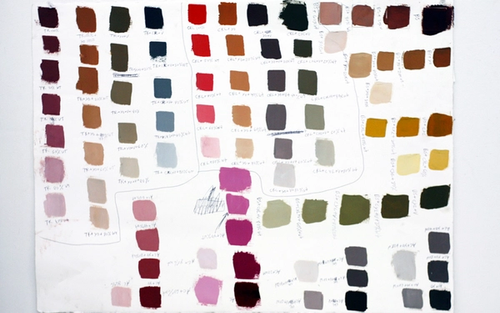
Color Harmony
Ability to demonstrate color harmony in designs through the selective use of color (color schemes), control of saturation, contrast, and color proportion. Ability to create and utilize a 12 and 24 step Color Wheel for color selection.

Color Effects
Ability to create effective figure-ground relationships demonstrating usage of advancing vs. receding colors, control of saturation, temperature, and value contrast.
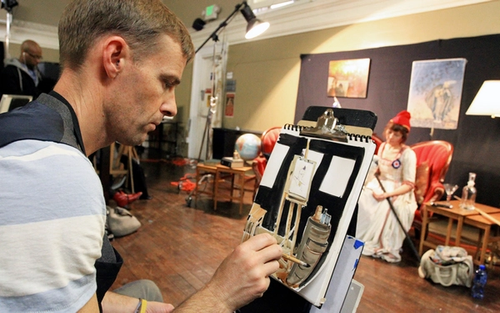
Understanding the Effects of Light on Color
Ability to suggest objects in warm or cool environmental light demonstrating appropriate color, value, and temperature changes in light and shadow.
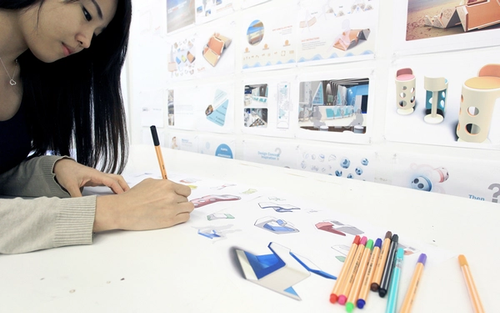
Color Identification/Matching
Ability to demonstrate color harmony in designs through the selective use of color (color schemes), control of saturation, contrast, and color proportion. Ability to create and utilize a 12 and 24 step Color Wheel for color selection.
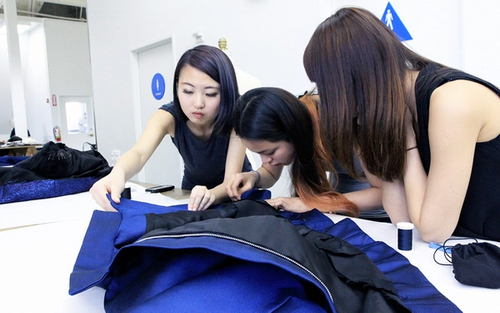
Communication Skills
Ability to discuss assignments or make oral presentations to the class. Ability to discuss work intelligently and critically using standard art vocabulary.

Problem Solving
Ability to understand an assignment and apply technical knowledge to generate solutions. Ability to deconstruct a concept or assignment into its component parts and make corrections based on understanding the individual factors which combine to make the piece.

Learning Attitude
The ability to be self-critical, make corrections, and learn from critiques. The ability to accept suggestions and ideas.

Organization and Management of Materials
Knowledge and use of appropriate materials.
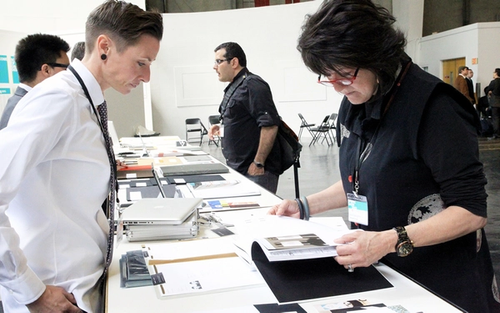
Professional Presentation of Projects/Professional Attitude
Ability to submit work according to professional presentation standards. Ability to meet project-staged deadlines and deliver projects on time. Effort and attention to detail demonstrated.


